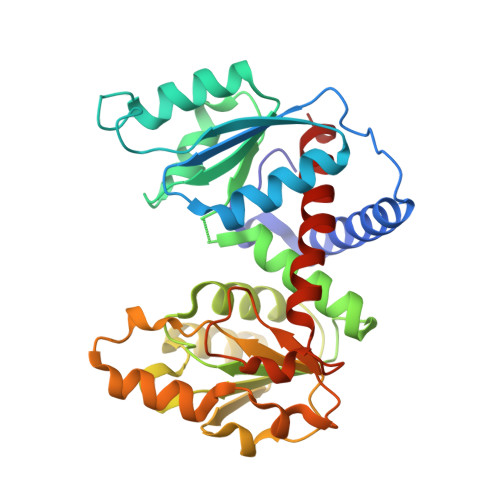Crystal structure of the catalytic trimer of Methanococcus jannaschii aspartate transcarbamoylase.
Vitali, J., Colaneri, M.J., Kantrowitz, E.(2008) Proteins 71: 1324-1334
- PubMed: 18058907
- DOI: https://doi.org/10.1002/prot.21667
- Primary Citation of Related Structures:
2RGW - PubMed Abstract:
The catalytic trimer of Methanococcus jannaschii aspartate transcarbamoylase is extremely heat stable, maintaining 75% of its activity after heat treatment for 60 min at 75 degrees C. We undertook its structural analysis in order to understand the molecular basis of its thermostability and gain insight on how its catalytic function adapts to high temperature. Several structural elements potentially contributing to thermostability were identified. These include: (i) changes in the amino acid composition such as a decrease in the thermolabile residues Gln and Asn, an increase in the charged residues Lys and Glu, an increase in Tyr and a decrease in Ala residues; (ii) a larger number of salt bridges, in particular, the improvement of ion-pair networks; (iii) shortening of the N-terminus and shortening of three loops. An interesting feature of the crystal structure is the association of two crystallographically independent catalytic subunits into a staggered complex with an intertrimer distance of 33.8 A. The active site appears similar to Escherichia coli. Upon substrate binding, smaller changes in the global orientation of domains and larger conformational changes of the active site residues are expected as compared to E. coli.
Organizational Affiliation:
Department of Physics, Cleveland State University, Euclid Avenue at East 24th Street, Cleveland, Ohio 44115, USA. j.vitali@csuohio.edu















